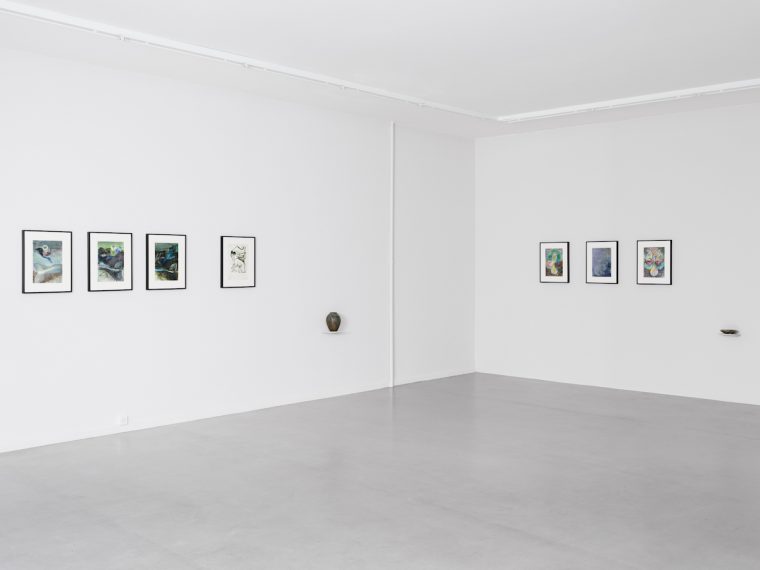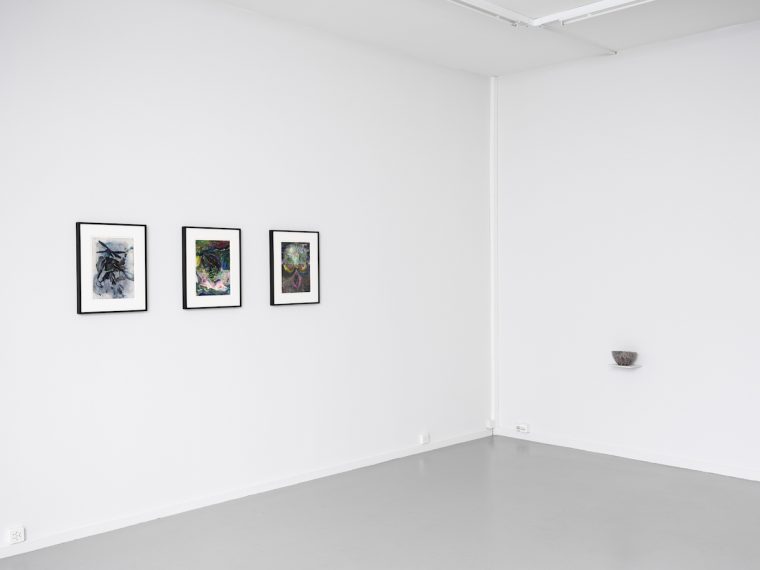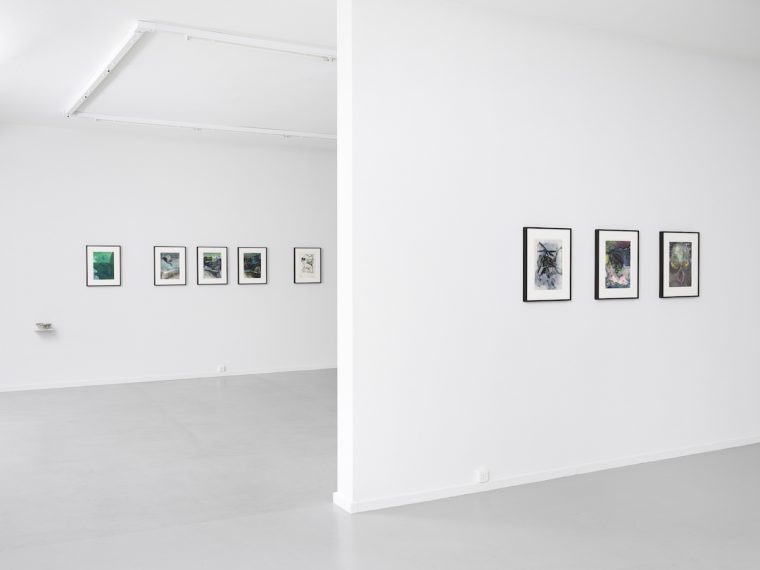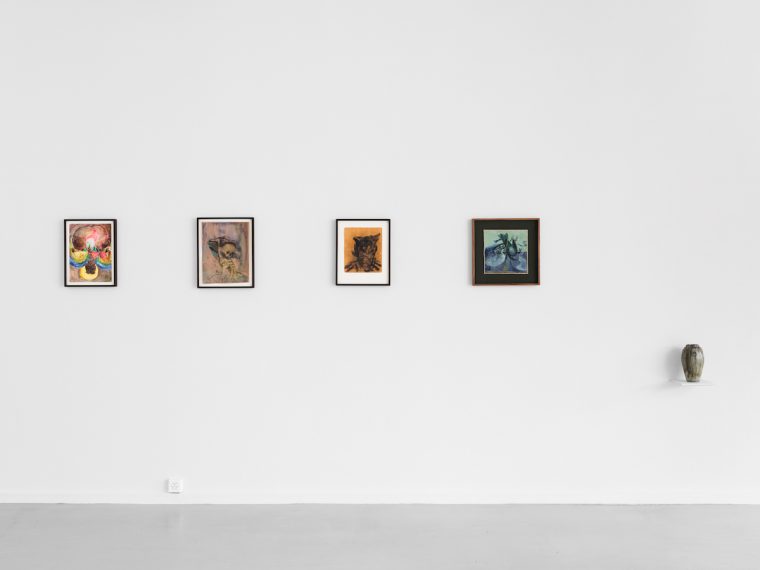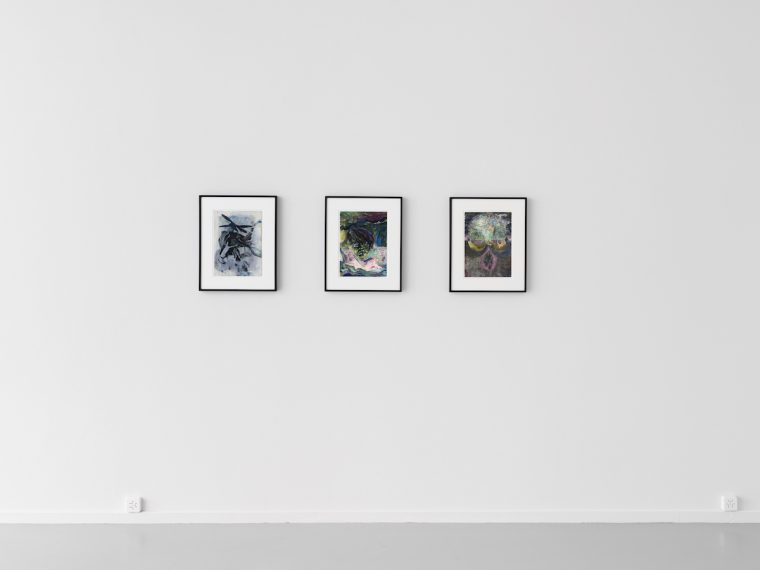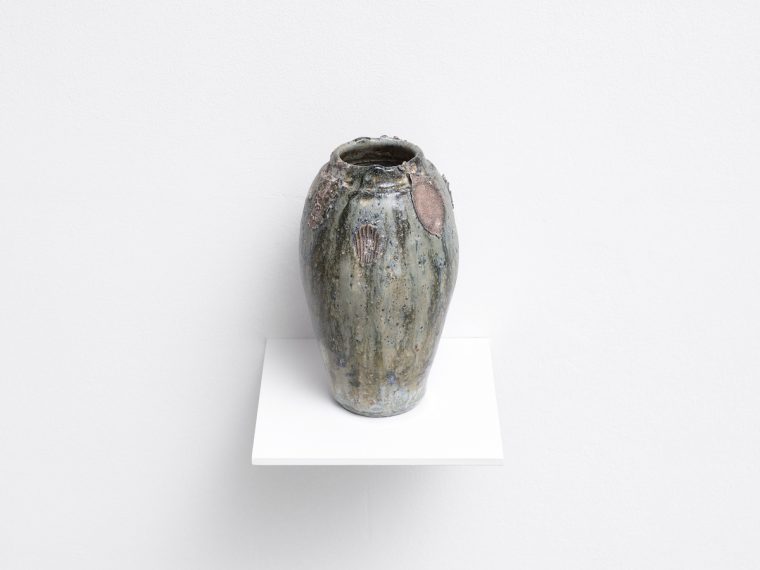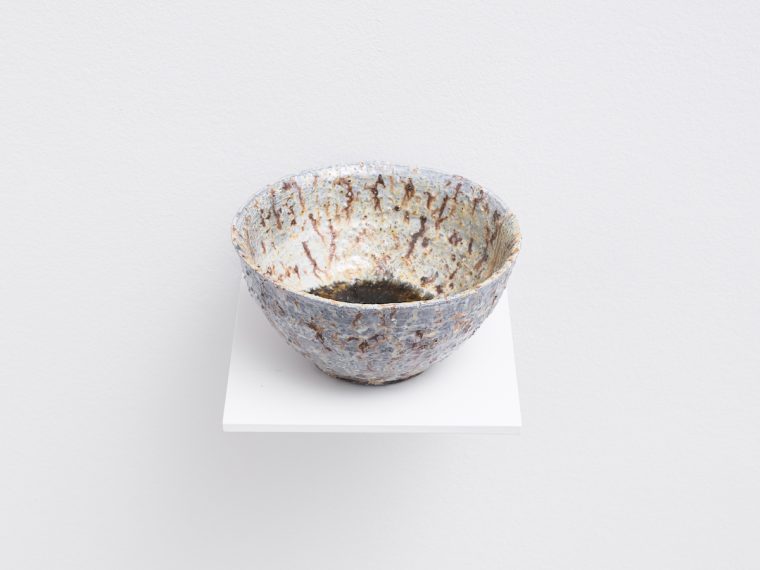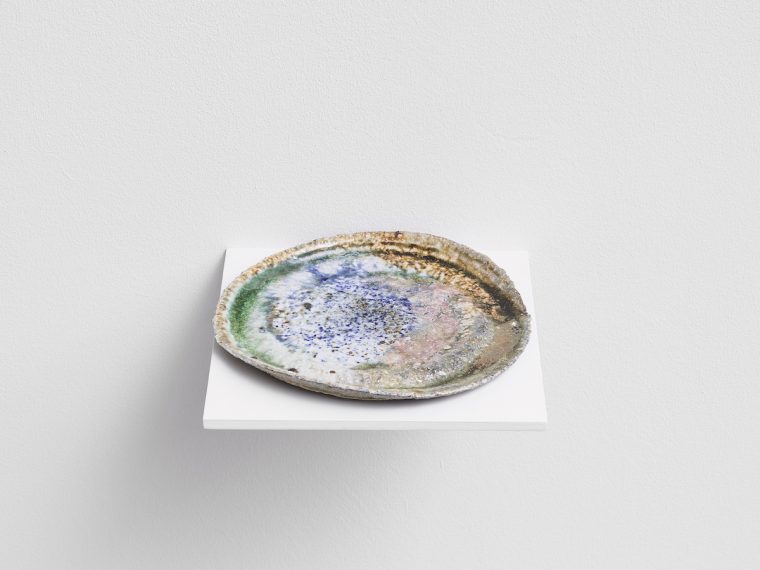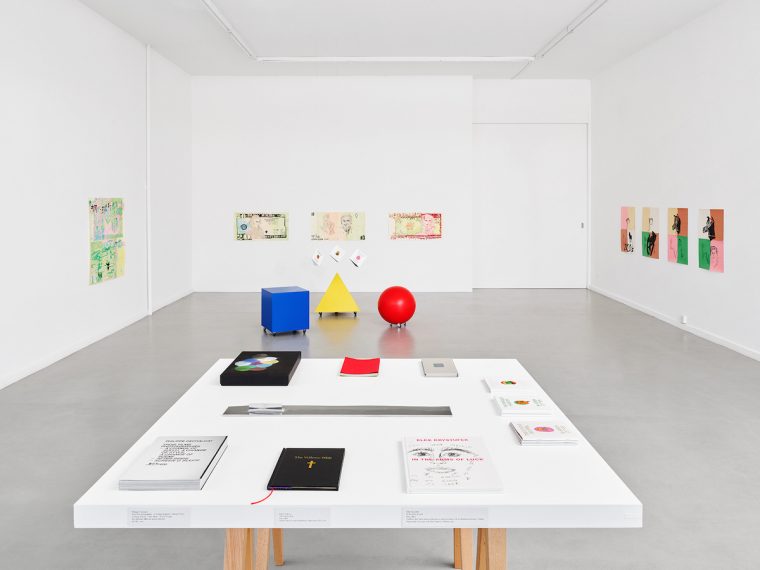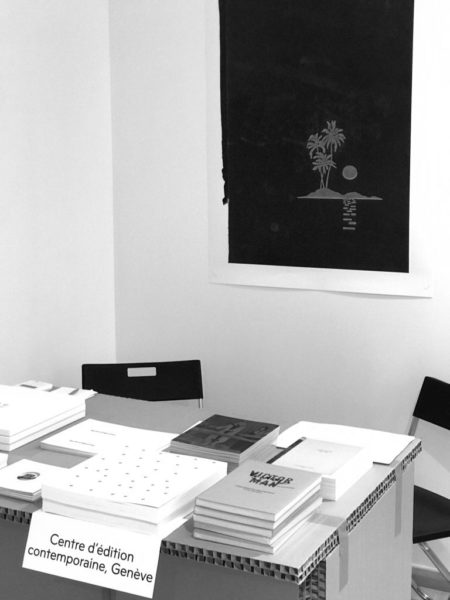Entrelacs
Victor Man invites Navid Nuur
From May 18 till September 15, 2018
Opening Thursday May 17, 2018 from 6 PM to 9 PM (Common openings of the Quartier des Bains)
For his exhibition at the CEC, Victor Man invites Navid Nuur not so much to create a common work but rather to establish a dialog and to underline a certain kinship between their artistic practices: their use of traditional and handcrafted techniques – watercolour for the one and ceramics for the other -, their common references to materials that bear strong symbolic and poetic meaning – minerals, water, fire -, their personal and artistic background, but also their ties to childhood, to memory and perhaps to nostalgia. A shared way of revisiting the significant initiatory stages that rendered this duo possible and natural, offering an installation alternating the watercolours of Victor Man and the ceramics of Navid Nuur.
This duo exhibition represents the last step of the collaboration that the CEC undertook with Victor Man since 2014 and that started with the edition of an object, a sailor’s knife. An element already present in some of his paintings and that are significant of the themes that cross his work; the fragmented, erotised and fetishized body. We can imagine in the background of his images some mysterious and esoteric rituals from which symbolic clues emerge: psychoanalyses and even mysticism flirt with surrealism, animism and occultism. A dark, surreal and phantasmagorical atmosphere suggests violence and an implicit threat which is emphasised by a seemingly classical pictorial style, often virtuoso, thus intensifying the allegorical charge of the represented subjects; parts of the body, pale faces, objects, animals or emblematic plants: masks, skulls, pearls, gloves, snakes, flowers. A sustained tension emanates from the work of Man both through the strangeness of the subjects and the evocation of situations, often nocturnal, enclosed, suggesting sexually sophisticated scenes. The feeling of anxiousness, the romantic, sensual and erotic profundity that qualify his paintings are executed in dark colours, dense black mix with deep shades of green or blue, suggesting the deepness of the sea and contrasting with flashes of milky glowing white. Cast shadows on the objects, figures and interior scenes express an enclosed and timeless universe. Intimate scenes are handled in details, figures are presented in close-up, the restrained position of the bodies, wrapped in an enigmatic atmosphere and the reserved and troubling eroticism evoke Man Ray, Pierre Klossowski, Meret Oppenheim or Pierre Molinier. For that matter, the pictorial references of Man are rather located in the Pre-Rennaissance and Renaissance period in Italy. He refers to paintings such as The Flagellation of Christ attributed to Pietro di Giovanni d’Ambrogio or The Madonna del Parto by Piero della Francesca. Other, more contemporary and literary references can be evoked like Madame Edwarda by Georges Bataille, La nouvelle rêvée by Arthur Schnitzler or even Étant donnés or La mariée mise à nu par ses célibataires, même by Marcel Duchamp, which suggest a more fantasmatic immersion where objects – clothes, accessories and furniture – convoke the mysteries of desire, fantasy, of manipulation and fear. His paintings are filled with ambiguous, androgynous figures, beyond gender, half animal, half human, oscillating between sacred and profane. The subjects seem to be absorbed in an abyss, a source of glossy and lunar light set on bodies that proliferate in a liquid or gas state, and which appears to light up the subject from within. This play enhanced between shadow and light make the materiality of painting disappear. A painting of incarnated bodies with a disembodied painting process.
Although Man’s paintings seems to plunge the bodies into dense and abyssal depths, this maritime metaphor reminds us of the sailor’s knife that we edited in 2014 and evokes the new series of watercolours that will be presented at the CEC. For his exhibition Victor Man invites Navid Nuur, for these two artists discovered their shared preference for natural, symbolic and poetic materials – water, minerals – that they both have experimented recently: watercolour for Man and ceramics for Nuur.
For Victor Man, the memory of his first watercolour realized as a child remains a nodal point in his work. This initial canvas remains emblematic for the artist and expresses the perfection and the ideal that he is still in search of. Man tempts to grasp a memory shape from this first watercolour, in the aqueous matter of the colour, a perfect expression for him probably of the mysticism of painting and the magic of its power of transformation.
As for Navid Nuur, he has recently initiated the production of some ceramics. The technique used blends strong materials composed by minerals: clay, sand, salt or palm tree ashes and shells found on beaches, to which Nuur adds aquarelle colours, which are also mineral. All is heated up to 1250 degree Celsius, the extreme temperature that enables to produce stoneware, literally “objects of stone”. This mineral and organic blending gives immediately to Nuur’s ceramics a raw, fossilised and stony appearance and at times a liquid and immaterial transparency due to vitrification. His ceramics testifies of the history of the techniques and the intrinsic strength of transformation of materials.
Navid Nuur relies on the modesty and the natural side of manual and artisanal production processes: ceramics, weaving, tapestry, graphite on paper … or even a recent series of paintings done with acrylic mixed with vitamin D, a blend that gives rise to metaphorical interpretations: ultraviolet rays enhance the production of vitamin D as well as bone mineralization. Others are realized with Ecoline, a kind of liquid ink-watercolour that Nuur dilutes with water during 24 hours by dripping. These drippings seem to dye the canvas from within, masking the process of manufacturing. These two examples of fabrication, between craft technique and do-it-yourself, perceptible or sometimes more hidden, brings Nuur’s research on the process of modification close to that of an alchemist. Victor Man’s and Navid Nuur’s interests converge probably in their fascination for the magic of transformation, between secret of production and power of creation.
Victor Man
Childhood Drawings for Rózsa
Artist’s book, offset, 16,2 × 23 cm, 128 pages, colour, cover with a book jacket, two colours, reproduction of several children’s sketchbooks and the publication of a letter by Victor Man « My dear Rózsa », English, 500 copies. Graphic design: NORM, Zurich. Print: DZA Druckerei zu Altenburg, Altenburg. Edition of the Centre d’édition contemporaine, Geneva, 2018.
ISBN 978-2-9701174-7-6
Victor Man’s artist’s book Childhood Drawings for Rózsa published by the CEC reproduces short comics made as a child. Victor Man proposes a selection and reframing of the pages of his old and carefully conserved notebooks, in collaboration with Manuel Krebs, graphic designer of the office NORM, Zurich. Not precisely a facsimile, but rather a reinterpretation or a kind of personal readymade, these comics tell the tales of some heroes uncannily resembling Arthur, Batman or Tarzan. In reality, Victor Man reinvented or reproduced from memory the heroic figures of the rare Western magazines – Pif Gadget and other journals for children – which he could only have access to sporadically and often “under the counter” in Communist Romania of the late 1970s and early 1980s. His drawings and small stories carry this double naivety, that of childhood and also that of a fantasy for a mysterious and inaccessible universe.
